Related Research Articles
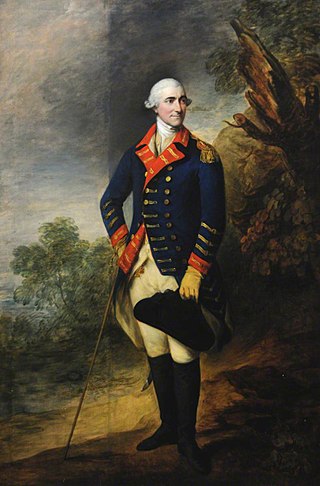
Field Marshal Henry Seymour Conway was a British general and statesman. A brother of the 1st Marquess of Hertford, and cousin of Horace Walpole, he began his military career in the War of the Austrian Succession. He held various political offices including Chief Secretary for Ireland, Secretary of State for the Southern Department, Leader of the House of Commons and Secretary of State for the Northern Department. He eventually rose to the position of Commander-in-Chief of the Forces.
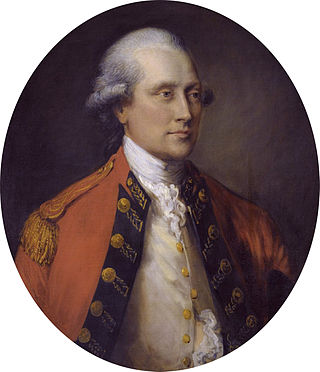
Field Marshal John Campbell, 5th Duke of Argyll, styled Marquess of Lorne from 1761 to 1770, was a Scottish soldier and nobleman. After serving as a junior officer in Flanders during the War of the Austrian Succession, he was given command of a regiment and was redeployed to Scotland where he opposed the Jacobites at Loch Fyne at an early stage of the Jacobite Rebellion and went on to fight against them at the Battle of Falkirk Muir and then at the Battle of Culloden. He later became adjutant-general in Ireland and spent some 20 years as a Member of Parliament before retiring to Inveraray Castle.

Field Marshal Hugh Gough, 1st Viscount Gough, was a senior British Army officer. After serving as a junior officer at the seizure of the Cape of Good Hope during the French Revolutionary Wars, Gough commanded the 2nd Battalion of the 87th Regiment of Foot during the Peninsular War. After serving as commander-in-chief of the British forces in China during the First Opium War, he became Commander-in-Chief, India and led the British forces in action against the Marathas defeating them decisively at the conclusion of the Gwalior campaign and then commanded the troops that defeated the Sikhs during both the First Anglo-Sikh War and the Second Anglo-Sikh War.
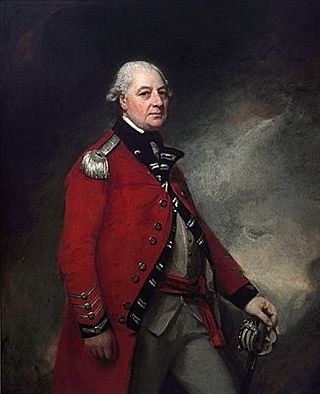
Field Marshal George Townshend, 1st Marquess Townshend, PC, known as The Viscount Townshend from 1764 to 1787, was a British soldier and politician. After serving at the Battle of Dettingen during the War of the Austrian Succession and the Battle of Culloden during the Jacobite Rising, Townshend took command of the British forces for the closing stages of the Battle of the Plains of Abraham during the Seven Years' War. He went on to be Lord Lieutenant of Ireland or Viceroy where he introduced measures aimed at increasing the size of Irish regiments, reducing corruption in Ireland and improving the Irish economy. In cooperation with Prime Minister North in London, he solidified governmental control over Ireland. He also served as Master-General of the Ordnance, first in the North Ministry and then in the Fox–North Coalition.

General Sir George Brown, was a British officer notable for commands in the Peninsular War and the Crimean War.

Sir George Nugent, 1st Baronet, GCB was a British Army officer. After serving as a junior officer in the American Revolutionary War, he fought with the Coldstream Guards under the Duke of York during the Flanders Campaign. He then commanded the Buckinghamshire Volunteers in the actions of St. Andria and Thuyl on the river Waal and participated in the disastrous retreat from the Rhine. He went on to be commander of the northern district of Ireland, in which post he played an important part in placating the people of Belfast during the Irish Rebellion, and then became Adjutant-General in Ireland. He went on to be Governor of Jamaica, commander of the Western District in England, commander of the Kent District in England and finally Commander-in-Chief, India.
Field Marshal Lord Frederick Cavendish was a British Army officer and Whig politician. After serving as an aide-de-camp to the Duke of Cumberland in Germany during the early stages of the Seven Years' War, he served under Charles Spencer, 3rd Duke of Marlborough in the raid on St Malo and then took part in the raid on Cherbourg. Cavendish commanded the rear-guard during the re-embarkation following the disastrous battle of Saint Cast and was taken prisoner. After his release, Prince Ferdinand of Brunswick gave him command of a brigade of chasseurs which he led to victory at the Battle of Wilhelmsthal in June 1762.
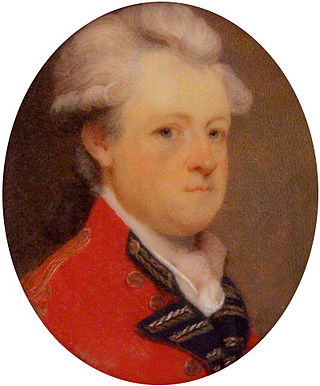
Field Marshal William Harcourt, 3rd Earl Harcourt, was a British nobleman and British Army officer. He served as an aide-de-camp to Lord Albemarle for the expedition to Havana during the Seven Years' War. He also commanded his regiment at the Battle of White Plains and then captured General Charles Lee at Basking Ridge during the American Revolutionary War. After that he commanded the British Cavalry at the Battle of Willems during the Flanders Campaign. He succeeded the Duke of York as commander during that campaign and oversaw the British retreat and their final evacuation from Bremen. His last main military role was as Governor of the Royal Military College at Great Marlow.
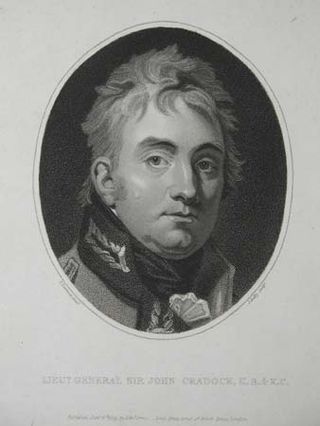
General John Francis Cradock, 1st Baron Howden was a British peer, politician and soldier.
John Stanwix was a British soldier and politician.

General Sir Charles Asgill, 2nd Baronet, was a career soldier in the British Army. At the end of the American Revolutionary War he became the principal of the so-called Asgill Affair of 1782, in which his retaliatory death sentence while a prisoner of war was commuted by the American forces who held him, due to the direct intervention of the government of France. Later in his career, he was involved in the Flanders campaign, the suppression of the Irish Rebellion of 1798 and was Commander of the Eastern Division of Ireland during the Irish rebellion of 1803.
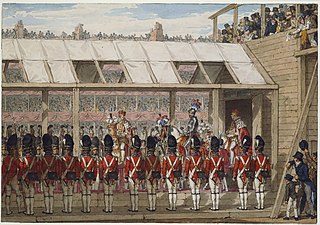
Kenneth Alexander Howard, 1st Earl of Effingham, was a British Army officer and peer.
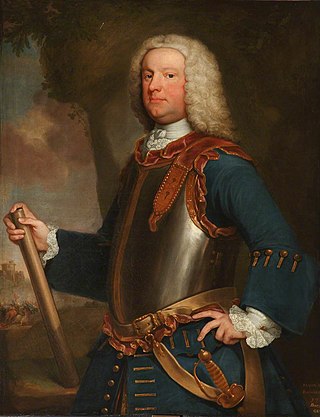
Lieutenant-General Richard Onslow was a British Army officer and politician. After the death of their parents, his older brother Arthur bought him a captain's commission in the British Army. He first saw action in the Anglo-Spanish War in 1727, after which he was returned to Parliament for the family borough of Guildford. His political contributions were negligible in comparison to his brother, and he continued to serve as a career officer, holding commands in the War of the Austrian Succession at Dettingen and Fontenoy. In 1759, he was appointed Governor of Plymouth and commander of the Western District, and died as a lieutenant-general the following year while presiding over two prominent courts-martial.
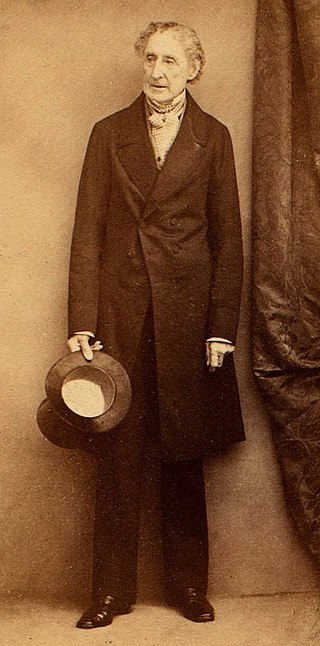
General Sir Frederick Stovin was a British Army officer who served throughout the Napoleonic Wars and the War of 1812. After the end of the wars, he commanded colonial garrisons and served in administrative roles in Ireland, before retiring with the rank of colonel to take up a position at court as a Groom in Waiting under Queen Victoria. In retirement, he continued to rise through the ranks of general officers by seniority, dying a full general.

General John Howard, 15th Earl of Suffolk, 8th Earl of Berkshire, FSA was a British soldier and nobleman.
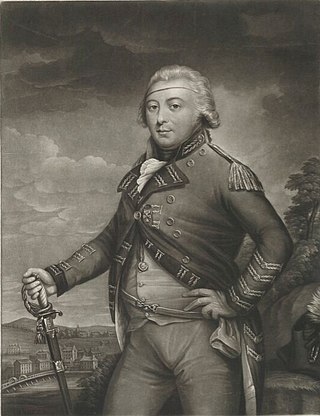
Major-General Sir Henry Johnson, 1st Baronet, was an Anglo-Irish general in the British Army.
James Johnston was a general of the British Army, colonel of the Royal Horse Guards then colonel of the Scots Greys where he succeeded his sister's husband, George Preston.
Thomas Pearce, PC was an English army officer, a privy councillor and a member of parliament. During the War of the Spanish Succession he was deputy commander-in-chief in Portugal later serving in Gibraltar. He was appointed to Ireland in 1715, spending his last five years in Dublin where he died in 1739, General of his Majesty's Forces in Ireland.
General Flower Mocher, was a British army officer who served 50 years in the cavalry. He initially obtained a commission with Hawley's Dragoons then, following 12 years service with the Horse Grenadier Guards, he served 17 years with the Dragoon Guards as their Lieutenant Colonel and Colonel. Two years before his appointment as a general officer he was made Colonel of the 9th Regiment of Dragoons in Ireland. After some years service as deputy to the commander-in-chief Ireland he retired in 1794 shortly before his appointment to the rank of full General.
The plan of raising a fencible corps in the Highlands was first proposed and carried into effect by William Pitt the Elder, in the year 1759. During the three preceding years, both the fleets and armies of Great Britain had suffered reverses, and it was thought that a "home guard" was necessary as a bulwark against invasion.
References
 This article incorporates text from a publication now in the public domain : Stephen, Leslie, ed. (1886). "Bragg, Philip". Dictionary of National Biography . Vol. 6. London: Smith, Elder & Co.
This article incorporates text from a publication now in the public domain : Stephen, Leslie, ed. (1886). "Bragg, Philip". Dictionary of National Biography . Vol. 6. London: Smith, Elder & Co.